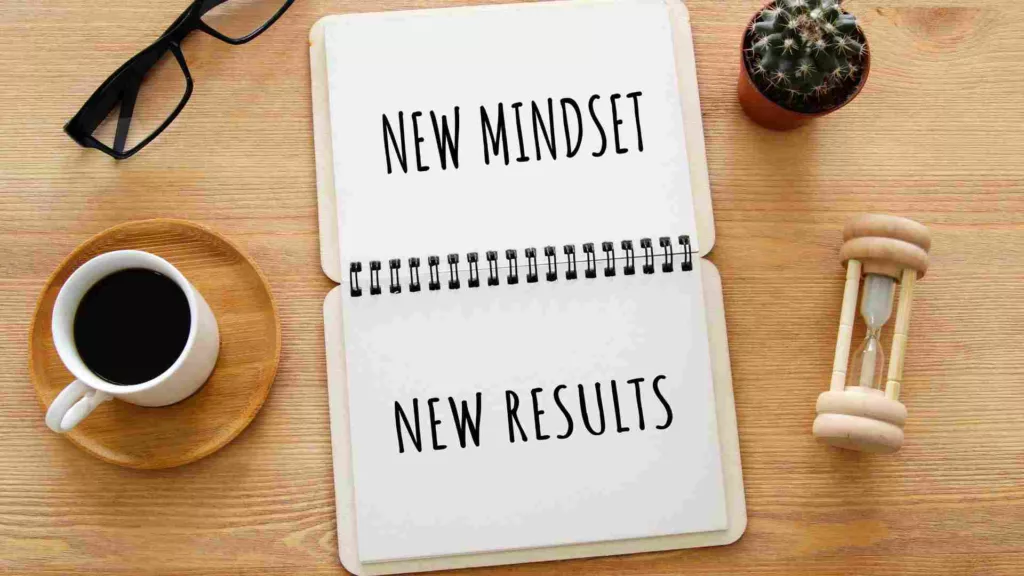Posted in Launch Your Business, Lead Your Team by Jo North
Innovation Failure Creates Learning
The theme of wanting to avoid innovation failure and create the “perfect” solution comes up time and time again in my conversations with entrepreneurs and corporate innovators.
Getting it right first time is a great aspiration, and there’s nothing wrong with that in principle. The challenge is that, by definition, business innovation means working towards commercializing a new product or idea that hasn’t been done before. It’s rarely a straight line to success.
You can (and should) use data, market and competitor analysis and get customer feedback. But, if you are launching something new it will be difficult to predict with complete accuracy how the market will respond, and how well your ideas will work in practice. Being comfortable with innovation failure (I prefer to call see it as “learning”) is essential if you want to grow your business.

What is Innovation Failure?
If you ask ten people what innovation failure is, the chances are that you’re going to get ten very different answers.
By definition, failure is “…the state or condition of not meeting a desirable or intended objective.” So, failure is not succeeding in your goals.
The problem is that people see innovation failure as a bad thing, something to fear, something to avoid. But you can learn something when you fail. It’s a critical part of your business’ learning journey, if you approach it with a growth mindset.
In business, failure is a stepping stone to success rather than something to stop you from achieving your goals. Share on XSee Innovation Failure as a Stepping Stone to Success
In business, failure is a stepping stone to success rather than something to stop you from achieving your goals.
The resilience that you show when you learn from your innovation failure and bounce back from it should be enough to give you the courage to continue on your path. You’ll just do it a little differently next time.
You see, failure is what will help you to learn how not to do something. Thomas Edison never believed that he failed to create the lightbulb. Instead, he realized that there were over 10,000 ways NOT to make a lightbulb, and only one way to make it work. If he had given up after he failed the first ten times, the world would be a very different place. Each of Edison’s failures didn’t make him quit and give up; instead, they pushed him to learn and try again continuously.
“I have not failed. I’ve just found 10,000 ways that won’t work.”
Thomas Edison
A big part of growing your business is experimentation, so there’s no need to quit if what you have tried doesn’t work the first time. It’s through failing that you can get to that next step – don’t be afraid to explore what failure means to you.

Good Innovation Failure and Unhelpful Innovation Failure: What’s the Difference?
Not all types of innovation failure are equal to each other. There is a good failure, and there is an unhelpful failure. The key to your success is in knowing the difference, and knowing how to fail well. Let’s take a look:
Good Innovation Failure
Hopefully, we’ve already established that failure is a necessary step towards growth. Taking this one step further, when you deliberately use innovation methods such as lean start-up, innovation failure is an integral part of the process.
Brainstorming
When you have a brainstorming session, some not-so-great ideas will come up. You need those to inspire and shape the good ones, so don’t write them off. You need to have a culture of workplace innovation. This means that you and your team can be free to fail and learn safely and appropriately, as many times as it takes to succeed. Especially when it comes to shaping your next breakthrough idea.
Lean Start-up Fundamentals
The fundamental approach of lean start-up is to turn ideas into products or services, measure how customers respond, and then learn whether to pivot or persevere. All successful innovation processes should be geared to accelerating that feedback loop.
In reality, this means that you run tests on your idea and keep testing and tweaking until you get the desired result.
When you experiment, and you realize something doesn’t work, it doesn’t make it an innovation failure. Instead, it shows you what not to do next time. You can read about this in more detail in my video on lean innovation here.
Minimum Viable Product (MVP)
In product development, the minimum viable product (MVP) is a product with just enough features to satisfy early customers, and provide feedback for future development.
Creating and testing a Minimum Viable Product (MVP) is a fundamental part of lean innovation.
Rather than waiting to perfect and polish every aspect of a product before it gets tested, or goes to market, the MVP helps innovators to be more agile, ship their concepts much more rapidly, and get customer feedback that helps them to continuously improve the product to make it better, stronger and more attractive more quickly.
Innovators can build fast, test fast, learn fast and then start the process again. They constantly refine and develop the product in response to customer feedback and behavior.
Waiting until the business has developed the ‘perfect’ product often means wasting time and money, and in some cases allows the competition to get there before you do.
Some tips for when failure happens
Unhelpful Innovation Failure
Repeated Mistakes
Repeated, avoidable and unnecessary mistakes are not the sort of failure that will help your business. It’s really important to make that distinction. If you’re getting fundamental stuff wrong repeatedly in the day-to-day running of your business, and you know how to do it better but aren’t doing it, that needs to get sorted as soon as possible.
If you’re getting fundamental stuff wrong repeatedly in the day-to-day running of your business, and you know how to do it better but aren’t doing it, that needs to get sorted as soon as possible. Share on XFailure You Can’t Afford
Innovation is a bit like financial planning. Don’t risk more than you’re willing to lose.
The brilliance of lean innovation is in its caution. It lets you test the waters gradually rather than diving headfirst.
Before investing fully, visualize the highs and the possible pitfalls of your idea.
Always be prepared for the worst-case scenario, ensuring it won’t be a showstopper.
By adopting this measured approach, you’ll increase your chances of success while staying resilient through setbacks.
Glorified Innovation Failure
Failure is going to happen in business, whether you plan for it to or not.
However, innovation failure is often glorified unnecessarily and unhelpfully, usually by the media and “rags to riches” stories.
There is a big difference between owning the failure, learning from it and moving forward, and glorifying failure. Failure isn’t the problem. How you respond to it is what matters.
It can be inspiring to hear the most accomplished people in our society have overcome significant adversity to achieve great things. But, in reality, many of these stories have been shaped by marketers and PRs to tap into our hope that we too can overcome the odds and make it big one day. These stories sell books and get views. In reality, you don’t have to fail so spectacularly to be hugely successful in the end.
Putting failure on a pedestal and glorifying it means that we don’t learn from the actions that led to the failure in the first place. Innovation failure helps us only when we stop to process what we have learned and integrate those insights into our future actions and decisions.

Putting Ideas into Action
A key difference between successful entrepreneurs and everyone else is action. Plenty of people have great product or service ideas but never do anything about it. The reasons are usually either that they:
- lack confidence in their idea
- believe the idea is too difficult to achieve
- don’t think they have the time
- are unsure how to make it happen
The result is that they give up too easily.
Drive Your Ideas Forward
All you need is one good idea, but it takes self-belief, motivation and leadership to make an idea a reality.
Motivation and enthusiasm as well as embracing trial and error, are what will stop your idea from being one that fails before you get it off the ground.
You’re the one behind this idea, and there is no magic solution to make your idea a reality. You need to accept good feedback and criticism, and go into your innovation journey with an open mind. Criticism is not something that makes your ideas invalid. Instead, it should strengthen them. Much like helpful innovation failure can make your business stronger, not weaker.
Fear of Innovation Failure
There’s a difference between being cautious about things that could go wrong and being too afraid to make a move. You may well be a strong, open-minded person who takes a few risks as an innovator, but that doesn’t mean that, like most of us, you won’t be afraid sometimes.
It’s crucial to remember that the greatest failure is the failure of not trying.
Tips to Help Overcome Innovation Failure
Here are some tips to help you overcome your fear of innovation failure:
- Remember that regret is a stronger feeling than failure, and the feeling lasts longer
- Recognize that fear is temporary
- Don’t be afraid to embarrass yourself when you try and fail; it’s part of your learning process for success
- Focus on your overall goal and not the smaller obstacles that get in the way
- Trust your instincts. Take on board sound advice, make tweaks where you need to but trust yourself. Self-belief is vital!
- Schedule review sessions with your team regularly to accelerate your learning cycle and catch potential failure early
- Focus from the start on always working to achieve your Minimum Viable Product (MVP) – this approach has learning built into it
What to Do When Innovations Do Fail
Given that failure and innovation go hand-in-hand, here are some tips on how to deal with it.
- Analyze it. Get to the bottom of what went wrong and learn how to make changes for next time.
- Get your financials in order. You want to try again, so you need to be solvent enough to do it.
- Speak to other innovators in your field about how they overcame failure. Take on board their tips and insights.
- Take some time for yourself to get your head around the failure, and some space from the idea, so that you can come back and tackle it from a fresh perspective.
- Try again, and make sure that you include the changes you can make to do better next time.
Potential Reasons for Your Innovation Failure
There are many reasons why an innovation might fail. These include:
- Lack of effective validation and testing with your target group of customers
- Weak implementation
- A lack of money or insufficient investment
- The wrong location, or time
- Competitor activity
- Impulsive decision-making
- Ineffective marketing and communications; weak or unclear messaging or packaging
- Quality issues
The failures that you encounter along the way will help you to develop and strengthen your ideas. Innovation is an iterative process. That means progress doesn’t always happen in a nice, straight line. Sometimes you need to go backwards so that you can go forwards again.

When to Quit Your Innovation?
Sometimes, the best thing to do it is to quit the innovation. Here are some ways that you can tell whether or not you should continue to pursue your innovation.
Confidence Level
How strong is your confidence in your idea, as a percentage? If you’re 70% confident still (I’ve heard that the benchmark that the US Marines use in combat decision-making!) go ahead. If not, it sounds like it’s time to rethink.
Customer Demand
If your idea is for a new product or service, re-test your assumptions about customer demand. Go back to the market to re-test and re-evaluate its commercial potential.
Also test that your marketing mix in terms of product or service design, marketing communications and promotions, as well as pricing are attractive. It may be that one of your marketing elements is “off”, rather than the idea itself.
If, once you’ve done that, it seems unlikely that you will get the market response that you need for successful commercialization, it’s time to walk away. Or, at least press pause for a while and reconsider before you invest more time and money.
Avoid Sunk Cost Mentality
Many entrepreneurs and corporate innovators think they’ve got to keep going with an idea that really isn’t working, because they have spent time and money on it.
The time and money you’ve already spent are known as “sunk costs”. That’s flawed logic, though. It’s much better to cut your losses as soon as you see that an idea isn’t going work. Don’t throw away good money after bad.
Get an Objective, Expert Perspective
As an innovator you have some skin in the game and are emotionally as well as financially invested in your idea. Talk through your idea and what you’ve done so far to launch it with someone who has expertise, and is objective. Look at it with a fresh pair of eyes.
The Delicate Balance of Innovation in the Corporate Landscape
Innovation is at the core of most thriving businesses in the United States and around the globe. From new products to new business models, innovation projects are essential for companies to stay relevant and competitive in their industries. It’s no secret that great ideas can propel a company forward, but as the innovation process unfolds, there are various potential pitfalls to be wary of.
Innovation Failure Examples
When considering innovation strategy, we can reflect on some historic missteps. A great example is the Google Glass. This product, while technologically impressive, failed to understand its target market and meet customer needs, resulting in it becoming one of the most notorious product failures. But it’s not just the realm of tech where innovation can miss the mark. In the consumer goods sector, New Coke by Coca-Cola faced a backlash from its dedicated consumers, proving that understanding customers’ needs is paramount.
It’s important to remember, however, that for every Google Glass or New Coke, there are successful innovators launching innovative products that revolutionize industries. Digital cameras changed the way we capture memories, rendering traditional film almost obsolete. Yet, their rise could be contrasted with the fate of the DeLorean DMC-12, a car ahead of its time but riddled with issues that prevented commercial success.
Large corporations often embark on ambitious innovation initiatives, seeking market leadership. However, these companies, including in the United States and across the globe, face inherent challenges. Cultural barriers, long decision-making cycles, and the burden of legacy systems can sometimes steer innovation in the wrong direction. In contrast, small companies with less bureaucratic hindrance can often pivot and adapt their innovation strategies with better results.
The innovation team within a company plays a crucial role in navigating these challenges. From brainstorming innovative ideas to understanding potential customers, their efforts can make or break an innovation project. Yet, it’s not just about having good ideas. The most innovative companies employ a team approach, engaging various departments from product innovation to marketing to ensure alignment with the corporate strategy.
Expect Some Failures
However, a high failure rate, especially of new products, is often the norm. The new product failure rate can be daunting, with some estimates suggesting that up to 90% of the time, innovation fails. Blockbuster Video, once a market leader in the United States, missed the shift to digital and streaming, leading to its decline. This stands as a good example of how even market leaders can make wrong decisions if they aren’t attuned to shifts in the market and consumer behavior.
Leverage Success Enablers
But there are also numerous success stories. The digital age brought forward companies that leveraged the power of social media and online platforms to capture significant market share. Moreover, initiatives like open innovation have enabled firms to collaborate externally, harnessing new ideas beyond company walls.
One of the most common reasons innovations falter is the disconnect between company management and the realities of the market. The main reasons range from not adequately assessing customer needs, misjudging market trends, or even internal challenges such as cultural barriers or misalignment in corporate strategy. Remember the fate of Pan American World Airways? Despite its early successes, it couldn’t adjust to changing industry dynamics.
For every failed innovation like the Google Glass, there’s a counter-narrative of successful products that understood and addressed customer needs effectively. There’s no one-size-fits-all formula for success, but key lessons emerge from both successes and failures. Whether it’s the ill-fated New Coke or innovative game-changers like digital cameras, understanding the market, customers, and having a flexible approach can spell the difference between success and obsolescence.
Every Success Story Has Its Challenges
Innovation, with its potential rewards and risks, remains a vital aspect of corporate and entrepreneurial endeavors. Whether launching new ideas or refining existing products, companies must remain agile, open to feedback, and committed to understanding and serving their customers. After all, in the world of innovation, today’s failure modes can become tomorrow’s blueprints for future success.
Whether you’re a budding entrepreneur or part of a global corporation, remember that every big idea starts with a spark, and every success story has its share of challenges. The goal is to learn, iterate, and relentlessly pursue better solutions for a changing world.
If you’d like any help with your innovation, please do get in touch here. I’d love to hear from you.


